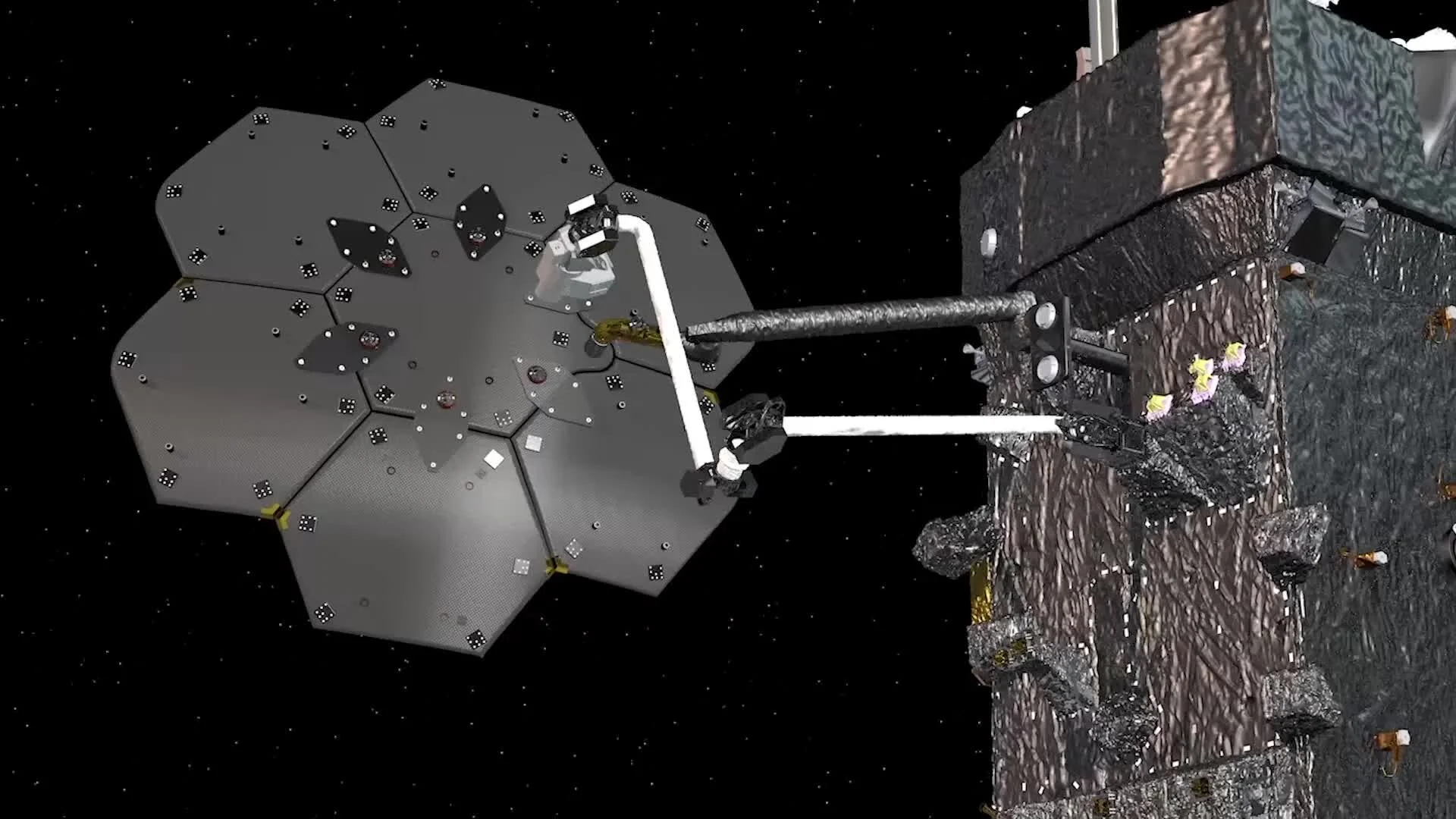Deorbit Tethers Promise Great Utility to Minimize Space Debris
The Terminator Tape Deorbit Module by Tethers Unlimited is able to accelerate the deorbit time of small satellites. Multiple startups are exploring this technology, which has been proposed decades ago. Credit: Tethers Unlimited.
A new deorbit tether will be tested by Aurora Propulsion Technologies in December 2020. The 1.5U CubeSat test will ride to space on a SpaceX Falcon 9 rocket, after which it will be propelled to a sun-synchronous orbit via Momentus Space Vigoride. In addition to the tether, Aurora will test and utilize their new water thrusters for cubesat control.
The tether from Aurora, called the Plasma Break Module, will utilize a 500 meter long wire that creates Coulomb drag for the spacecraft when it interacts with Earth’s upper atmosphere plasma. This drag has the effect of slowing the spacecraft, which then lowers its orbit until it can burn up in Earth’s atmosphere. From Aurora’s spec sheet, the Plasma Break Module is intended to be offered to customers who wish to integrate it on spacecraft of up to 1000 kg. When activated, it will spool out a tether up to 5000 meters long and deorbit a spacecraft from up to a 1000 km high orbit. Multiple systems can be used on a spacecraft to speed up deorbiting. Power requirements to spool out the tether are small.
The system from Aurora joins other available deorbit tethers aimed at CubeSats, including the flight tested Terminator Tape system from Tethers Unlimited. Their system creates drag in a similar manner, but instead of deploying from a spool, a thin conductive tape deploys from a flat packed module. Terminator Tape was used on the Prox-1 satellite, deploying a 70 meter tether that generated sufficient drag to reduce time-to-deorbit from hundreds or thousands of years, to less than ten years.
Other CubeSats currently in orbit have similar Terminator Tape systems that will unfurl to shorten the time-to-deorbit once they reach end of life. The company also offers longer and wider tape for larger satellites, and is currently working on a LEO Knight system for attaching their Terminator Tape system to abandoned satellites in-orbit.
Similar to Aurora’s upcoming test of their Plasma Break Module, Tethers Unlimited also has another test planned for late 2020. The DragRacer mission will launch on a Rocket Lab Electron and will consist of two identical CubeSats: one with and one without Terminator Tape. This test will be a direct demonstration of the difference the Terminator Tape makes in reducing the time to deorbit.There have been many other space tether tests, with significant work done in the 1990s. During that time over 65 kilometers of tethers were deployed in tests demonstrating the capability to generate drag, thrust, and power. Many missions to test tethers have been done with mixed success since, but overall funding for tether research has been greatly reduced.
Tethers continue to show great promise as a low cost method to prevent new and reduce existing orbital debris. Tethers also offer cost effective power and thrust capabilities that will be valuable for lowering spacecraft operational costs in the future.







